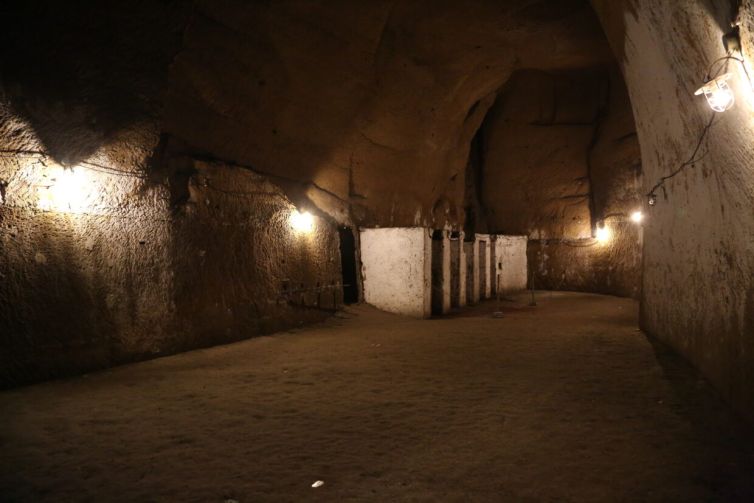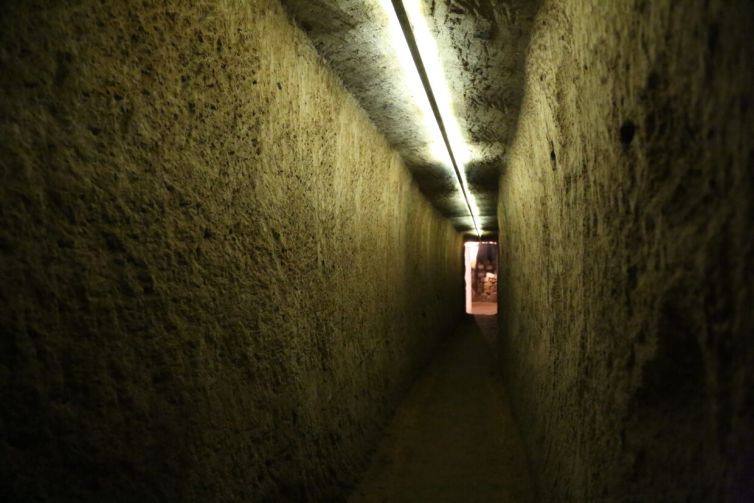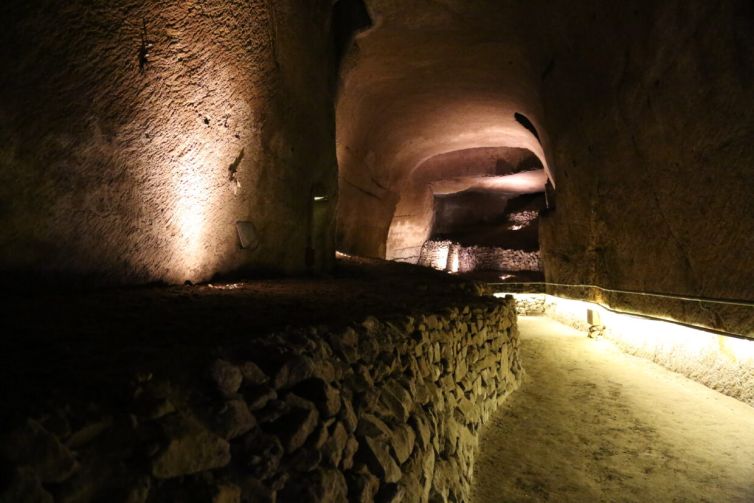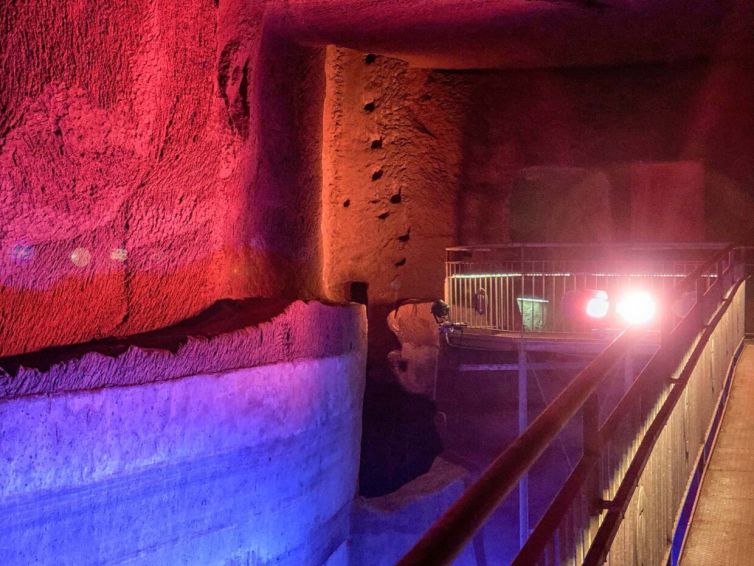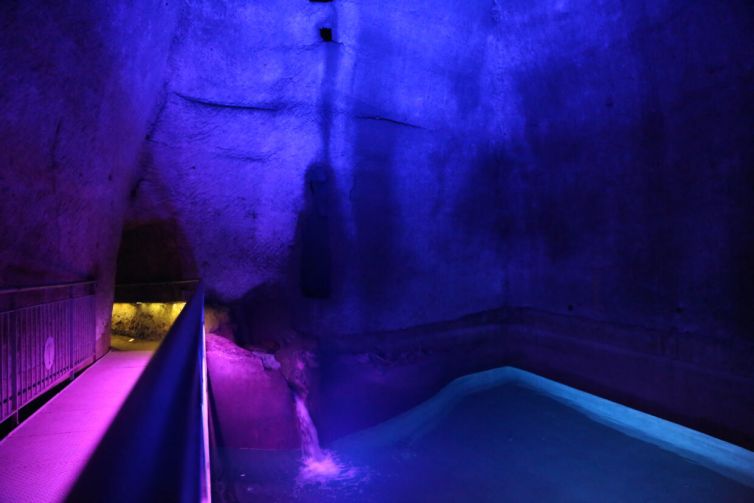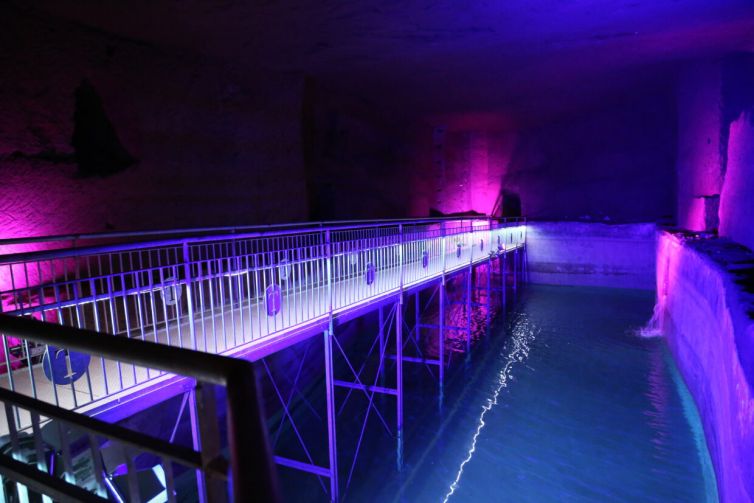The Lapis Museum
Nestled in the historic center of Naples, the Lapis Museum offers a unique journey through time, showcasing the city’s rich history and cultural heritage. This extraordinary museum, housed within the ancient Basilica of Pietrasanta, unveils the mysteries of Naples from the Greco-Roman times to the present, making it a must-visit destination for tourists and history enthusiasts alike.
The Water Museum: A Deep Dive into Ancient Cisterns
The Lapis Museum’s Water Museum, inaugurated in 2021, breathes new life into ancient Greco-Roman cisterns. In partnership with ABC Napoli, the museum has revitalized these historical water reserves with flowing water and streams, recreating their original appearance.
Understanding Ancient Cisterns
The cisterns showcased at the Water Museum within the Lapis Museum are ancient water storage systems. These cisterns, dating back to Greco-Roman times, were engineered to collect and store rainwater and, in some cases, water transported from distant sources through aqueducts. This was a critical innovation, especially in areas where fresh water was scarce or seasonal.
The Advanced Nature of Cisterns
For their time, these cisterns were indeed at the forefront of engineering and urban planning. The Greco-Roman cisterns in Naples, for example, were part of a sophisticated water management system. They were designed with materials that could withstand the test of time and the pressure of stored water. The construction techniques and the materials used, such as waterproof cement and carefully laid bricks, ensured the longevity and effectiveness of these storage systems. The meticulous planning behind these cisterns speaks volumes about the ancient civilizations’ understanding of hydraulics and their commitment to public health and urban development.
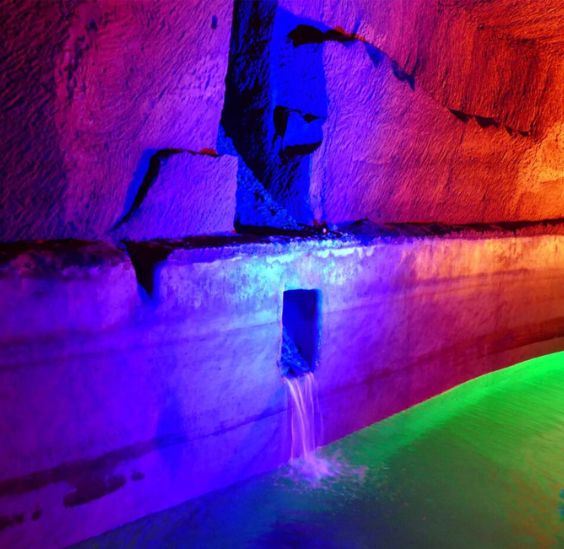

Comparisons with Other Civilizations
The use of cisterns was not unique to the Greco-Roman world. Many ancient civilizations recognized the importance of water management and developed their systems for storing and distributing water. For example:
- The Indus Valley Civilization (around 3000 BCE) had well-planned water supply systems and drainage, including large reservoirs and bathing areas.
- Ancient Persians were pioneers in using qanats (underground canal systems) to transport water across great distances, a testament to their engineering skills.
- The Maya civilization in Mesoamerica created complex water collection and storage systems, including reservoirs, to manage their water supply in response to the seasonal rains.
These examples highlight that the concept of water storage and management was a global innovation, adapted by various cultures to meet their specific environmental challenges and needs. The cisterns found in Naples and displayed in the Water Museum are part of this broader history of human ingenuity in ensuring access to one of life’s most vital resources.
The Significance of the Water Museum
By exploring the Water Museum at the Lapis Museum, visitors gain insight into how ancient Neapolitans interacted with their environment to secure a stable water supply. The museum not only showcases the technological advancements of the past but also prompts reflection on contemporary issues of water management and conservation. The ancient cisterns, once at the cutting edge of technology, serve as a reminder of the enduring importance of sustainable practices in urban planning and the ingenious ways our ancestors solved complex problems.
The Bourbon private tour. Royal Palace and Underground Gallery
Discover Naples’ hidden depths on a tour through the Bourbon Tunnel. Traverse from the Royal Palace to Piazza del Plebiscito and along the scenic Lungomare Caracciolo. Beneath the city, ride a raft along an underground canal, experiencing the subterranean history up close in a small, personalized group setting.
The Submerged Decumanus: A Haven During World War II
A mile-long underground path beneath the Pietrasanta Complex leads visitors through parts of the city’s subterranean history, particularly focusing on its use during World War II as an air-raid shelter. This segment of the museum allows visitors to explore service areas and entrances used by Neapolitans to survive the bombings of the era. Through permanent multimedia installations, the museum vividly recreates the atmosphere of those times, offering a profound insight into the resilience of the city and its people.

Shelter Capacity and Use During Bombardments
The Submerged Decumanus, part of the extensive underground network beneath Naples, played a crucial role during World War II, serving as a bomb shelter for the city’s inhabitants. While specific numbers can vary, such underground spaces could accommodate thousands of people seeking refuge from the aerial bombardments that cities across Europe faced during the war. The vast network of tunnels and cisterns beneath Naples, including the spaces like the Submerged Decumanus, were repurposed from their ancient origins to protect the civilian population during these raids.
Contribution to the Resistance Against the Nazis
The underground shelters of Naples, including the Submerged Decumanus, were more than just places of refuge; they became hubs of resistance activity. During the 4 Days of Naples in September 1943, the Neapolitan populace rose against the German occupation forces, marking a significant moment of local resistance that contributed to the liberation of the city before the arrival of Allied forces. These shelters provided a safe haven for planning and coordination among resistance fighters, underscoring the strategic importance of Naples’ subterranean world in the broader context of the Italian resistance movement.
Similar Underground Networks
Naples is not unique in having extensive underground passages that have served various purposes throughout history. Cities around the world boast similar networks, each with its unique history and function:
- Paris Catacombs: Initially limestone quarries, these were converted into ossuaries in the late 18th century and now house the remains of millions of Parisians, making them a historic site of interest.
- London’s Churchill War Rooms: Part of the British government’s secret underground headquarters during WWII, these rooms now serve as a museum dedicated to the period.
- Cappadocia’s Underground Cities: In Turkey, these ancient cities could shelter tens of thousands of people and were used through various periods for defense against invaders.
These examples, like the Submerged Decumanus, highlight the versatility and importance of underground spaces throughout history, not only as shelters but also as strategic assets in times of conflict. The network beneath Naples, with its rich history extending from ancient times through WWII and into the present, stands as a testament to human ingenuity and resilience in the face of adversity.
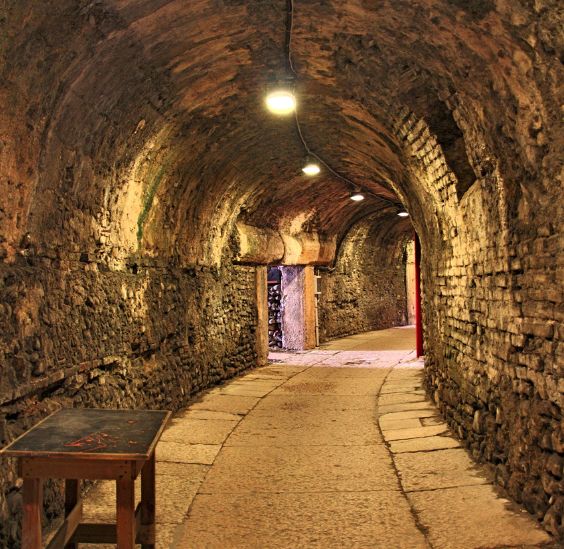
The Submerged Decumanus and Beyond: Exploring Naples’ Underground Heritage
Napoli Sotterranea (Naples Underground)
Napoli Sotterranea offers a fascinating glimpse into 2,400 years of Neapolitan history, located 40 meters beneath the bustling streets of the historic center. This vast network of tunnels and chambers spans beneath the city, providing a unique insight into various periods of Naples’ past, from Greek and Roman foundations to their use in World War II as air raid shelters. Visitors can explore ancient aqueducts that supplied the city with water for centuries, remnants of Roman streets, and even see how these spaces were adapted during wartime to protect the local population. The underground tours not only highlight the architectural and engineering prowess of ancient societies but also tell the story of a city that has constantly evolved, layer by layer, atop its historical roots.
Il Tunnel Borbonico (The Bourbon Tunnel)
The Bourbon Tunnel, or Galleria Borbonica, is another key component of Naples’ extensive subterranean landscape. Commissioned by Ferdinand II of Bourbon in the mid-19th century as an escape route from the Royal Palace to the military barracks and the sea, today it stands as a testament to the complex history and ingenuity of Naples. The tunnel’s path reveals a fascinating array of historical relics, from vintage cars and motorcycles abandoned in the tunnel to statues and water cisterns that date back to the 17th century. The Bourbon Tunnel’s strategic importance was again recognized during World War II when it served as a shelter for Neapolitans. Its walls are etched with the history of survival, resilience, and the unbreakable spirit of the city’s inhabitants during one of history’s most tumultuous periods.

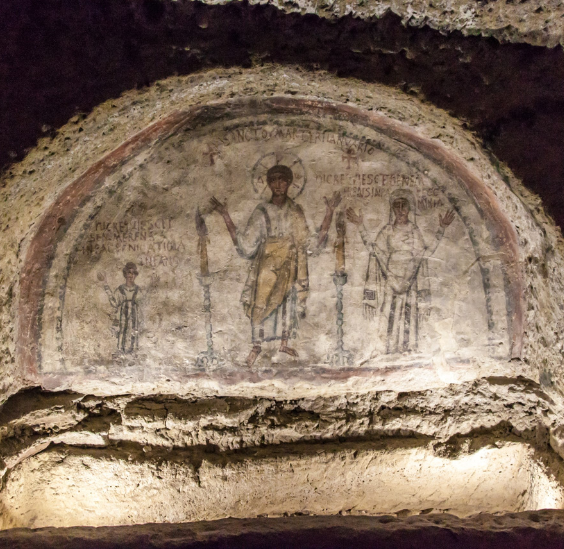
The Significance of Underground Naples
The exploration of the Submerged Decumanus, Naples Underground, and the Bourbon Tunnel provides a comprehensive understanding of Naples’ multifaceted history. These underground sites serve not only as a reminder of the city’s ability to preserve its past but also as a symbol of its inhabitants’ resilience in the face of adversity. Each underground space tells a different story, from ancient times through the Renaissance, to the challenges of World War II, offering a unique perspective on the city’s development and the strategic use of its subterranean landscape.
Together, these sites underscore the complexity and depth of Naples’ heritage, inviting visitors to delve below the surface to discover a hidden world that mirrors the vibrant, layered history of the city above. They highlight the ingenuity of ancient engineering, the strategic importance of these spaces in wartime, and the enduring spirit of a city that has risen, time and again, from the ashes of its past.
Address
Piazzetta Pietrasanta, 17-18 80138 Napoli


